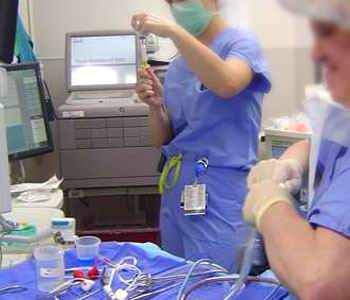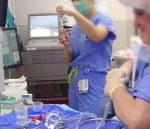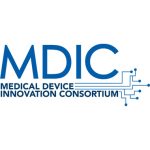The medical device industry, with encouragement from the FDA, has come to appreciate usability more than ever in recent years. In the interest of safety and the spirit of designing better user experiences, this is a good thing. However, increased awareness of something new can sometimes create misunderstanding, especially from well-meaning medical device manufacturers that are not well versed in the field of user-centered design. One trend that is becoming more noticeable is a conviction that “fewer steps” always equates to “easier to use” and an improved user experience. However, this sentiment is not always true, and in some cases can even cause more harm than good.
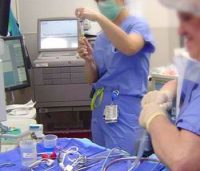
Often, medical device developers hold the conviction that fewer steps are better based on market research or voice of the customer (VOC) data: For example, a patient on a self-administered therapy declares, “I just want to get the injection over with and get on with my life;” a nurse operating an infusion pump complains, “I need to set it up quickly because I have so many other things to do!” These sentiments are not wrong, but they paint an incomplete picture, relying only on what people are inclined to tell us, and not necessarily how they really behave. VOC is only one component of a sound user-centered process and, by itself, fails to provide a deeper understanding of users and their environments, goals, motivations and challenges. As a result, medical device manufacturers sometimes fall into the trap of prioritizing users’ desires for fewer steps over other more important needs.
Ed Geiselhard will discuss Condensing User Needs into Product Design Specifications during the MedTech Intelligence Product Development Conference | LEARN MOREChallenging the Myth
Reducing steps is not in itself inherently good or bad; certainly it has the potential to contribute to a more positive user experience by better enabling quick and convenient interactions. However, positive experiences are not defined by convenience alone. Good user experience design properly accounts for a wide range of user needs, not all of which are well served by optimizing convenience.
Adopting a user-centered approach to medical device design helps us identify, understand and prioritize different user needs, in some cases revealing that efficiency and convenience are subordinate to other more fundamental aspects of a user’s experience. Consider a self-administered pen injector delivery device. Foundational to the experience of using one is to receive a proper dose of medication, and to ensure that it is delivered safely. Although a patient may not articulate those as first and second order needs, they will certainly raise concerns if those goals become compromised at the expense of saving a step when using a new device. Yet developers sometimes risk doing just this when seeking to eliminate steps that also can serve to check that a device is operational, confirm that a dose has been delivered, or mitigate accidental needle sticks.

A user-centered design approach also recognizes how prior experience greatly impacts the way in which a person approaches a new experience. Some of the most well-designed user experiences acknowledge existing behavioral conventions and mental models, giving users a head start in mastering new devices or technologies by enabling their informed assumptions around how something works. Revisiting the example of the pen injector, most users of these devices have learned to understand that the injector features a removable cap that covers the needle. A clever design that eliminates the need for a cap might provide a superior user experience because it also removes a step from the workflow. It can also make users uneasy because they are used to caps. Not finding one risks informing a faulty conclusion that the device has already been used (“Where’s the cap?”), or confuses users as to how the device works such that they abandon the attempt to use it, denying them a dose of needed medication.
Testing This Assumption
Acquiring an understanding of users’ needs is best achieved by iteratively engaging with them throughout the design process. This can start well before a design has begun to take shape, with discovery research. This entails engaging users in their actual environments and observing workflows as they happen in real time. Discovery research, the first interactions with users, allows the development team to uncover behaviors around existing devices and processes, identify opportunities for meaningful change, and better define user needs.
Opportunities and needs serve as a springboard to hypothesize and conceptualize a range of possible solutions. Early design activities should focus on creating divergent solutions that explore a range of user experiences, including exploration of different device features and workflow steps. Divergent designs may explore binary options, such as the absence or presence of a specific step or feedback mechanism. It may also explore options along a spectrum, where one concept embodies a function that requires a discrete action on the part of the user and another that makes the same function passive, occurring automatically as triggered by some other action.
The next user interaction activity, directional research, provides a means of vetting a set of divergent solutions with users. Different ideas are tested by presenting users with low fidelity prototypes that embody only the details and functionality necessary to solicit reactions from users around critical aspects of a design. Here, development teams can better understand the trade-offs between different approaches to addressing user needs based on how users respond to them. Findings from directional research are used to down-select concepts and direct efforts toward a much narrower set of concepts (or a single concept) to be further developed.
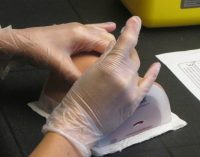
Formative usability testing, the third research step, typically evaluates a single design direction. Here, testing validates hypotheses and confirm that users are physically and cognitively capable of understanding and using a proposed device design. This stage provides confirmation that any measures taken to improve a user experience (including reducing steps) do not compromise other, more important objectives. Formative findings help to refine and eventually finalize the design, and mitigate the risk of use error often before formal development and design controls enter the picture.
Defining a Positive User Experience
In a recent design challenge for the development of a medical device intended for use by patients in their homes, the team struggled with how to implement a self-check mechanism to confirm functional status prior to use. Some project team members advocated for an approach that embedded the self-check within another task that users were required to complete to set the device up, in essence saving a step. Others worried that such an approach risked being ignored by users, as the self-check was hidden; they advocated for a discrete action on part of the user, at the expense of adding a step.
Adopting a user-centered approach, the team created several concepts that embodied each solution, and tested them with users utilizing low fidelity, non-functional prototypes, enabling users to simulate the workflows inherent to each. Here, the team learned that most users considered the extra step not only acceptable, but actually preferable, as it put the user in control of something important, and provided peace of mind that the device was ready and able to be used as an important part of their therapy regimen.
Summary
A positive user experience is critical for ensuring safe, effective use of a medical device and enabling market success through adoption and loyalty. Defining it is also usually more complex than most people might think. The surest way of effectively managing this complexity is to adopt a user-centered approach to design. This process helps the development team better define the product requirements and create a design solution that delivers both intended functionality and positive user experiences. In this context, these are certainly steps that no good developer should seek to eliminate from their process.

